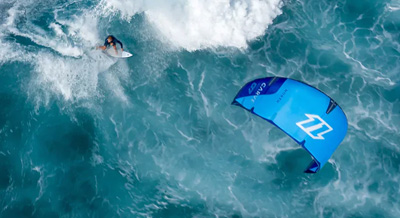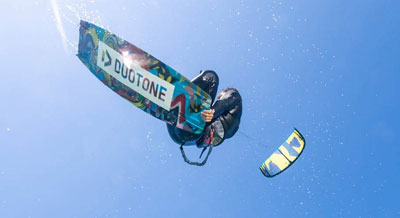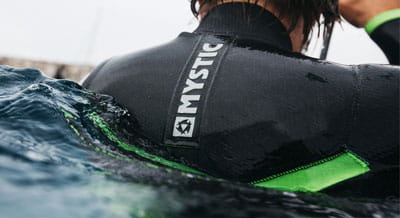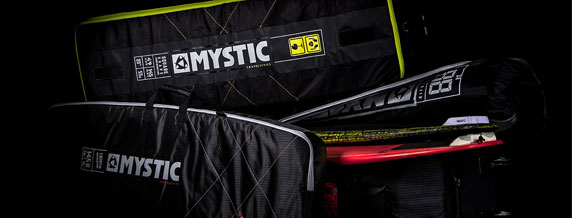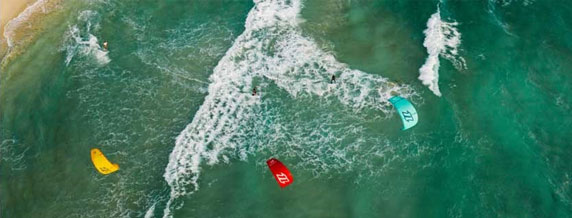20.04.2020
Kitesurfing and safety

Kitesurfing has become safer in recent years. With the arrival of certain right of way rules, accidents on the water are being reduced. The quality of the materials we use must also meet certain requirements to make kitesurfing as safe as possible for everyone. In this blog we explain the priority rules and we will talk about the new ISO standard for the quick release.
Right of way rules
There are different priority rules for kitesurfers to make kitesurfing as safe as possible. There are every year more and more kitesurfers and the kite spots are getting more crowded. If kitesurfers ignore these right of way rules, they create dangerous conditions in which accidents can happen. We will explain all the rules clearly for you so that you know exactly what to do on the water so you can ride safely on the water. Do you already know all the rules, or are there a few that you did not know about?
Rule 1: Running kitesurfer has priorityThis rule is there to protect the kitesurfer on the beach. The kitesurfer on the beach has more risks because the kiter is close to hard obstacles and other beach visitors. The kiter at sea can safely return into the sea so that the kiter on the beach can safely enter the water as soon as possible.
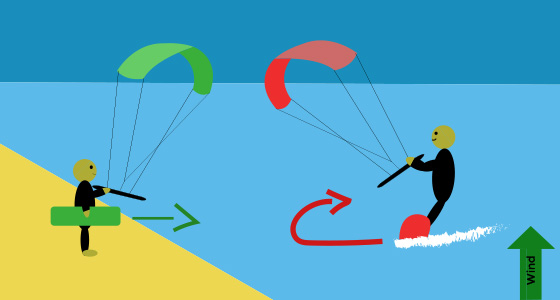
Rule 2: Right-hand kiter has right of way
The starboard kiter (kiter with the right hand in the front) always takes precedence over the port kiter (kiter with the left hand in the front). The starboard kiter can maintain his course and just continue kiting without adjusting his speed. The port kiter must change course. The port can do this by changing direction and speed. The port star must always pass the starboard kiter downwind. This rule ensures that you know exactly which kiter must divert and which kiter must keep his course to avoid accidents.
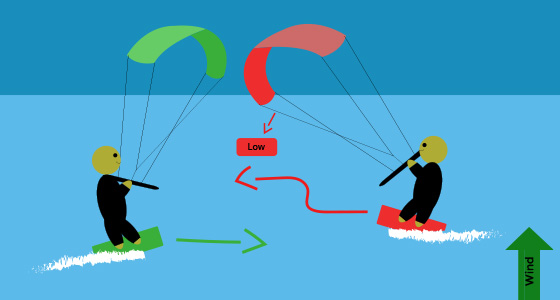
Rule 3: Upwind kiter keeps the kite high
The following rule has been devised to ensure that your lines do not get tangled with those of another kiter. The kiter riding upwind keeps his kite high when passing another kiter. The kiter riding downwind then keeps his kite low. This makes it impossible for the lines to touch and knot.
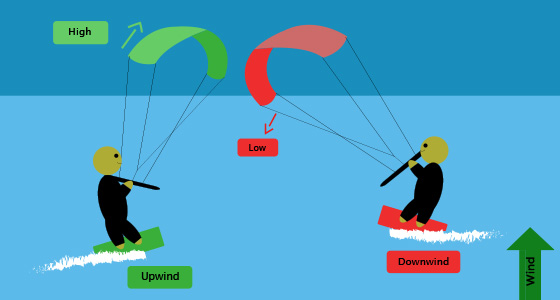
Rule 4: Slow kiter takes precedence
If you are riding behind someone who is slower than you, you have to give this kiter right of way. Often the kiter in front of you does not realize that you are kiting behind him. If the rider for you suddenly turns around, chances are that you will collide with each other. Slow kiters often have less experience than faster kiters, so it is better to avoid any risks.
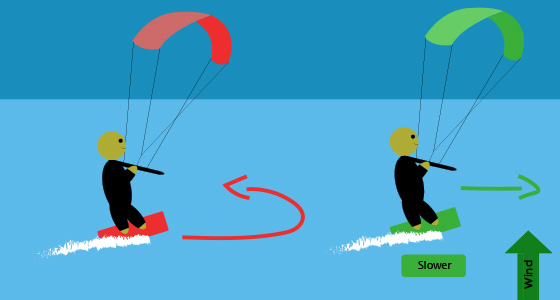
Rule 5: Kiter on the wave takes precedence
The kiter surfing a wave always has the right of way. The kiter on the wave has a more uncertain balance than a kiter who is freeriding. It is also no fun when you have finally caught a good wave and you have to give it up again because someone does not give you right of way. This rule ensures that no accidents can occur, and fewer discussions arise about who had priority.
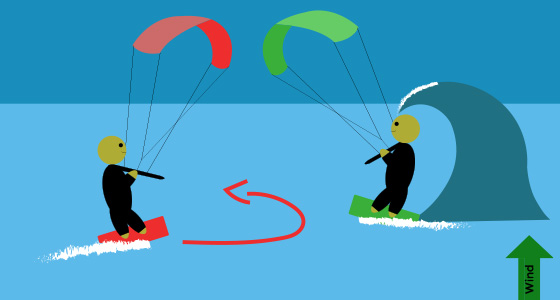
Rule 6: Body dragging kiter has right of way
A kiter who is body dragging always has priority. When a kiter is body dragging, his field of vision is very limited, and chances are he cannot see you. Because you are on a board it is easier for you to avoid this kiter. Thanks to this rule, accidents are prevented, and no more pressure is put on the body dragging kiter.
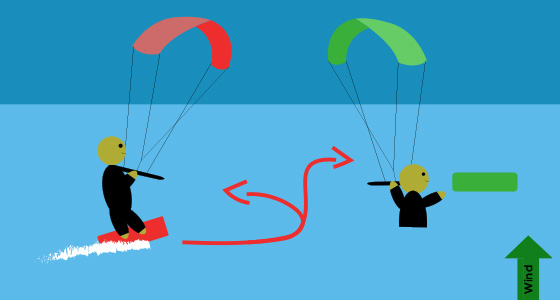
Rule 7: Lesson kiter takes precedence
A kiter who is taking lessons is often slower than a kiter who is already comfortably on his board. Lessoning kiters have less experience and can panic if you come too close. Often, they do not yet know how to react in dangerous situations, which can cause accidents.
Rule 8: Have a free zone when you jumpIf you are going to jump you have to be sure that you have enough space around you. Make sure your downwind has at least 50 meters of space to land your jump. Upwind you have to have 30 meters of space, so that you do not encounter other kites when you send in. You can also look behind you to be sure that there are no kiters behind you that you endanger with a jump.
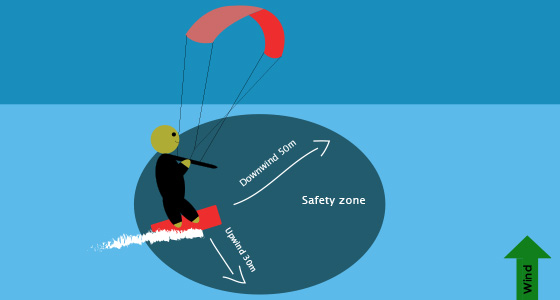
Rule 9: All other boaters have priority
Often you are also on the water with other water sports enthusiasts. Kitesurfers should always give priority to other water sports enthusiasts. This applies to kitesurfers because we can swerve and maneuver faster. There are also long lines attached to the bar and kite, and other water sports enthusiasts do not know where the lines are going. Thanks to this they can make unexpected movements, which can lead to accidents.
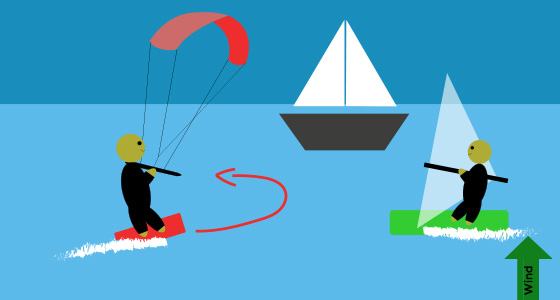
New ISO standard Quick-Release
At all times people are working on improvements for the materials you use during kitesurfing. The Global Kitesports Association (GKA) has set up a new safety standard for the quick-release in collaboration with the International Standardization Organization (ISO) and an international team of engineers and experts. The new ISO standard has been in force since February 14, 2020.
If a quick-release meets all requirements and has been tested by a certified institute, the ISO number 21853 is embedded somewhere in the quick-release. The quick-release is an important part that should work well if you get into trouble. Thanks to this new ISO standard, you as a consumer now know which quick-releases do and do not meet these requirements. Now it is easier for you to search for a safe kite bar with a quick-release that does its job in a stressful situation.
The ISO standard applies in all countries and overrules all other national norms, such as the French AFNOR norm. Each quick-release is tested in a qualified institute. To make the test as fair as possible, they test the quick-releases according to a certain procedure. There is also a specific number of quick-releases they have to test.
The quick-release is tested in a qualified facility and must meet certain requirements. The quick-release should open in less or equal to 2 seconds with a force less or equal to 170N in various conditions:
Other aspects of the quick-release are also being tested, such as the percentage of signal color and the strength of the material. A quick-release must also have a safety leash release system. This all ensures that you buy a strong and safe quick-release.
There are two different qualified facilities worldwide where the quick-releases are tested. They are both independent, so testing is fair. Only these two facilities are qualified to issue an official certificate stating that the product complies with the ISO 21853 standard. The facilities are in:
Having the ISO number embedded in the quick-release is a mandatory necessity of the standard, but for the 2020 season, products have already been manufactured before the effective date of the ISO standard. The brands were not allowed to embed the ISO number on the quick-release before the effective date of the ISO standard, February 14, 2020. As a result, the brands cannot call their products ISO 21853 certified, while the product may meet all ISO requirements. These brands can still submit an official, independent technical statement stating that the product meets all the ISO 21853 requirements. They may use the ISO 21853 label to indicate that their product meets all the demands. Click here to see all the brands and products that meet the ISO 21853 requirements.
You have no product(s) in you basket.
Weet je niet waar je moet beginner?
Contact our customer service for advice

